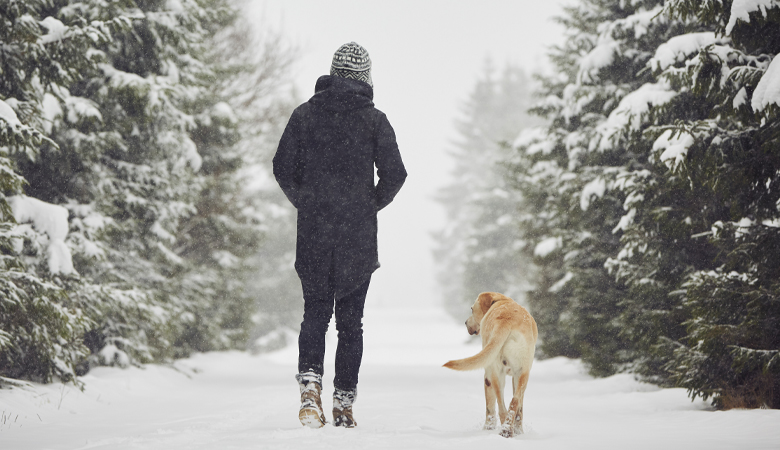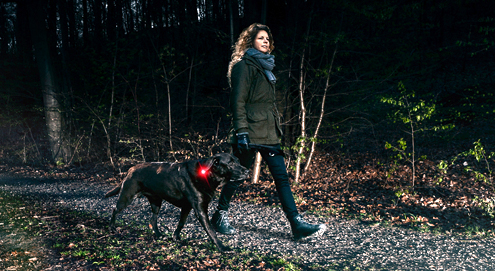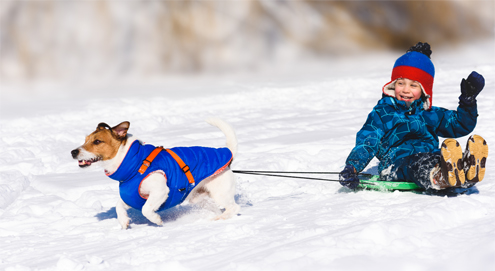2. Does your dog need a winter coat?
Whether a winter coat is needed depends on your dog’s coat type, size and living environment. Dogs with a thick or double coat often have enough insulation. Short-haired dogs, small breeds and older dogs tend to get cold more quickly and may benefit from a well-fitting, water-repellent winter coat. Make sure the coat allows plenty of freedom of movement and always supervise your dog.
Browse our range of dog coats or read more in A dog coat for your furry friend.
3. Protect paws from cold, snow and road salt
Road salt and grit can irritate or damage paw pads. Avoid treated roads where possible. Use petroleum jelly or paw wax to protect the pads and rinse your dog’s paws with lukewarm water after the walk. If your dog has sensitive or damaged paw pads, paw protection can offer extra support.
4. Watch out for eating snow and ice between the toes
Many dogs enthusiastically snap at snow. Small amounts are usually not a problem, but eating a lot of snow can cause stomach and intestinal upset. Dogs with longer coats can also get frozen snow stuck between the toes. Keeping the fur between the toes trimmed helps prevent discomfort and pain during winter walks.
5. Prevent your dog from getting too cold after a winter walk
In cold weather, do not stay outside longer than necessary, especially if your dog is not moving much. Never let a wet dog cool down outdoors. Wet fur insulates poorly and increases the risk of your dog getting too cold. Indoors, provide a warm, dry spot where your dog can dry off comfortably, for example in a cosy dog bed.
For extra comfort, you can also find inspiration via comfortable winter beds and cushions.
6. Watch out for antifreeze and other toxic substances
Antifreeze is extremely toxic to dogs and has a sweet taste. Even a small amount can cause severe poisoning with life-threatening consequences. Always store antifreeze safely and contact your vet immediately if you suspect your dog has ingested it.
7. Do not let your dog walk on frozen ponds or ditches
Frozen water can look solid, but ice can break unexpectedly. The surface is also slippery, which can lead to injuries to muscles and joints. Keep your dog on a lead in areas with frozen water to avoid risks.
8. Winter, holidays and fireworks: extra triggers for your dog
The winter period often brings busier days, visitors and fireworks. This can be stressful for dogs. Make sure your dog has quiet moments, a safe place in the home and plenty of routine. Would you like to support your dog around fireworks? Take a look at products for fear of fireworks. During the holidays, it is also important to know what dogs can and cannot eat.
More holiday tips can be found in tips for Christmas with pets, the most wonderfull time of the year with your pet and best Christmas gifts for your pet.
9. Support your dog’s immune system in winter
Cold temperatures and less exercise can affect your dog’s immune system. Good nutrition, enough rest and appropriate care help your dog stay in good shape. In some cases, supporting the gut flora can also contribute to immunity.
Read more in coat care during the winter and browse the probiotics and immune system category.







